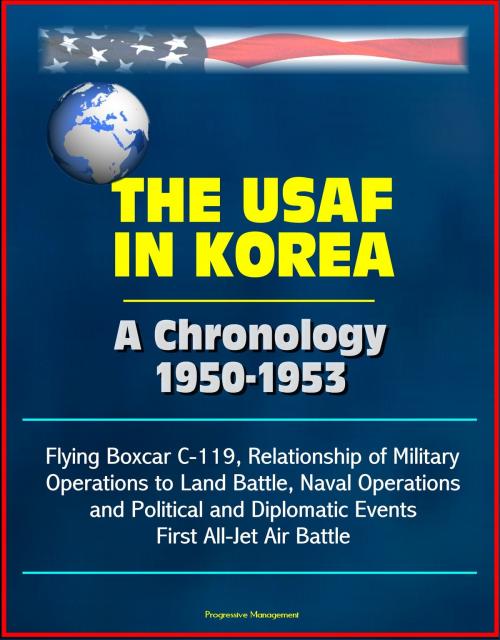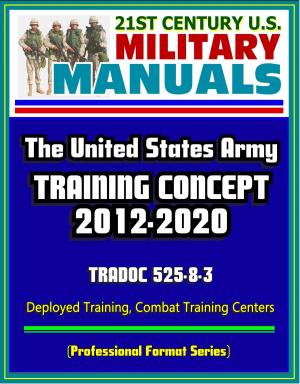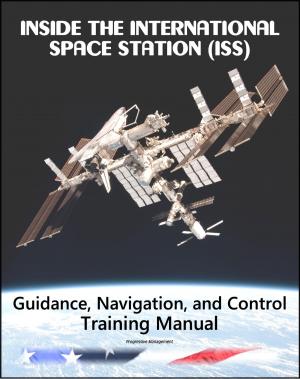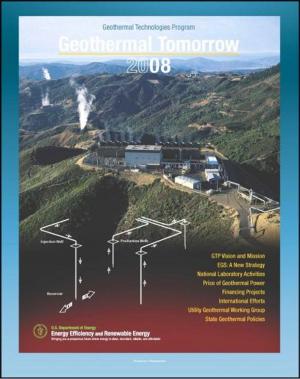The USAF in Korea: A Chronology 1950-1953 - Flying Boxcar C-119, Relationship of Military Operations to Land Battle, Naval Operations, and Political and Diplomatic Events, First All-Jet Air Battle
Nonfiction, History, Asian, Korean War, Military, Aviation| Author: | Progressive Management | ISBN: | 9781311708519 |
| Publisher: | Progressive Management | Publication: | August 13, 2015 |
| Imprint: | Smashwords Edition | Language: | English |
| Author: | Progressive Management |
| ISBN: | 9781311708519 |
| Publisher: | Progressive Management |
| Publication: | August 13, 2015 |
| Imprint: | Smashwords Edition |
| Language: | English |
Professionally converted for accurate flowing-text e-book format reproduction, this fascinating Air Force publication provides a comprehensive chronology of U.S. air operations in the Korean War. It points out the relationship of these operations to the land battle, naval operations, and important political and diplomatic events and identifies such USAF historical firsts as the first all-jet air battle, the introduction of new weapons systems, and the initiation of tactics, techniques, or procedures that had a major impact on later air operations.
In commemoration of the fiftieth anniversary of the Korean War, the U.S. Air Force (USAF) Historian commissioned the Research Division, Air Force Historical Research Agency (AFHRA), Maxwell Air Force Base, Alabama, to compile this chronology of significant events of USAF military operations in the Korean theater. The chronology points out the relationship of these operations to the land battle, naval operations, and important political and diplomatic events. It also identifies such USAF historical "firsts" as the first all-jet air battle, the introduction of new weapons systems, and the initiation of tactics, techniques, or procedures that had a major impact on later air operations. The chronology also identifies important people, including key commanders, recipients of the Medal of Honor, and aces. Finally, it attempts to summarize those USAF events in Korea that best illustrate the air war and the application of air power in the theater.
To present the information most effectively, the chronology offers narrative monthly summaries followed by daily entries of significant events. Each daily entry uses the local date, which in the theater is one day later than the date in the United States. Two dates separated by a hyphen indicate that the entry covers events occurring from the first date through the second. Two dates separated by a slash indicate that the events occurred during nighttime hours. Each event includes an explanation of its significance or correlates to information in the monthly summary.
The entries are based on primary sources available at the AFHRA, including organizational histories, intelligence summaries, digests, and operational statements of the U.S. Far East Command, Far East Air Forces (FEAF), Fifth Air Force, FEAF Bomber Command, FEAF Combat Cargo Command (Provisional), and the 315th Air Division (Combat Cargo). Sometimes, wing and group histories provided additional information. The researchers also consulted numerous secondary sources, usually to confirm the most significant events of the air war in Korea.
Professionally converted for accurate flowing-text e-book format reproduction, this fascinating Air Force publication provides a comprehensive chronology of U.S. air operations in the Korean War. It points out the relationship of these operations to the land battle, naval operations, and important political and diplomatic events and identifies such USAF historical firsts as the first all-jet air battle, the introduction of new weapons systems, and the initiation of tactics, techniques, or procedures that had a major impact on later air operations.
In commemoration of the fiftieth anniversary of the Korean War, the U.S. Air Force (USAF) Historian commissioned the Research Division, Air Force Historical Research Agency (AFHRA), Maxwell Air Force Base, Alabama, to compile this chronology of significant events of USAF military operations in the Korean theater. The chronology points out the relationship of these operations to the land battle, naval operations, and important political and diplomatic events. It also identifies such USAF historical "firsts" as the first all-jet air battle, the introduction of new weapons systems, and the initiation of tactics, techniques, or procedures that had a major impact on later air operations. The chronology also identifies important people, including key commanders, recipients of the Medal of Honor, and aces. Finally, it attempts to summarize those USAF events in Korea that best illustrate the air war and the application of air power in the theater.
To present the information most effectively, the chronology offers narrative monthly summaries followed by daily entries of significant events. Each daily entry uses the local date, which in the theater is one day later than the date in the United States. Two dates separated by a hyphen indicate that the entry covers events occurring from the first date through the second. Two dates separated by a slash indicate that the events occurred during nighttime hours. Each event includes an explanation of its significance or correlates to information in the monthly summary.
The entries are based on primary sources available at the AFHRA, including organizational histories, intelligence summaries, digests, and operational statements of the U.S. Far East Command, Far East Air Forces (FEAF), Fifth Air Force, FEAF Bomber Command, FEAF Combat Cargo Command (Provisional), and the 315th Air Division (Combat Cargo). Sometimes, wing and group histories provided additional information. The researchers also consulted numerous secondary sources, usually to confirm the most significant events of the air war in Korea.















